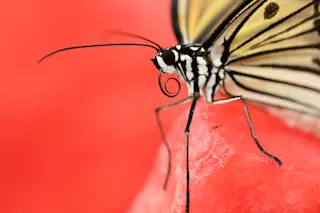I don’t mean to alarm you, but the average human brain size is shrinking. And we can’t blame reality T.V. or Twitter.
No, this decline began tens of thousands of years ago. It’s something of a well-known secret among anthropologists: Based on measurements of skulls, the average brain volume of Homo sapiens has reportedly decreased by roughly 10 percent in the past 40,000 years. This reduction is a reversal of the trend of cranial expansion, which had been occurring in human evolution for millions of years prior (see chapter 17).
Let’s review the boney evidence backing this observation, then explore some potential explanations. And just to ease your anxiety: Although you may have a smaller cranium than our Stone Age predecessors, human brains today are still about three times the size that's normal for a primate with our body weight.
A museum display shows Lucy, a female Australopithecus afarensis. (Credit: ...














